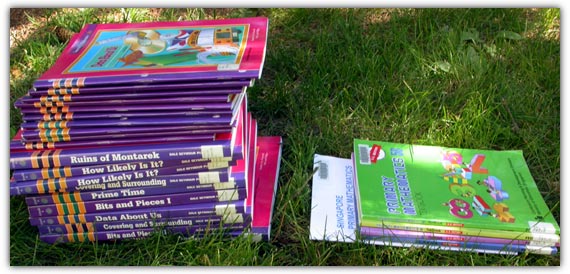Sensenbrenner on Connected Math

Running some searches recently, I came across this April, 2004 article by Lee Sensenbrenner on Connected Math. The words remain timely more than two years later:
A seventh-grader at a Madison middle school is posed with the following situation: A gas station sells soda in three sizes. A 20-ounce cup costs 80 cents, a 32-ounce cup is 90 cents and a 64-ouncer goes for $1.25.
The first question, which appeared in similar form on a recent exam, is as traditional as any mathematical story problem: What size offers the most soda for the money?
But the second question carries the spirit of the Connected Math Program, which has developed strong undercurrents of controversy - both here and nationally - and plays prominently in one of the Madison School Board races Tuesday.
This question asks: If the gas station were to offer an 84-ounce Mega Swig, what would you expect to pay for it?
There's really no concrete answer. A student, for instance, could argue that the 84-ouncer would cost what the 20-ounce and 64-ounce cups cost together. Another student could say that soda gets cheaper with volume, and then choose an answer based on some per-ounce price slightly less than what was given for the 64-ounce drink.
For the people fighting an impassioned battle over Connected Math, the differences between question number one and question number two are not subtle or inconsequential.
On one side, those who support Connected Math say that engaging students by presenting problems as real-life scenarios - often with no absolute solution or single path to arrive at an answer - fosters innovation and forces students to explain and defend their reasoning as they discover mathematical concepts.
The other side says the approach trades the clear, fundamental concepts of math, distilled through thousands of years of logical reasoning, for verbiage and vagary that may help students learn to debate but will not give them the foundation they need for more advanced mathematical study.
Many links and articles on math
can be found here. The recent
Math Forum is also worth checking out, along with
a discussion of the
District's math performance.
I'm told that the MMSD's math curriculum will be getting some attention this fall. We'll see (35 of 37 UW Math Faculty
Open Letter on Math).
My largest concern with Connected Math -
having read some of the books is that we're training the students to be consumers, not creative types (figure out the phone bill, count the cheerios, buy a soda, etc.). TeacherL
made a great point recently:
We can choose to be consumers or we can choose to be citizens. I know which one I think will provide the stronger future for our country."
Posted by Jim Zellmer at August 24, 2006 1:24 PM
Subscribe to this site via RSS/Atom:  Newsletter signup | Send us your ideas
Newsletter signup | Send us your ideas


 | Newsletter signup | Send us your ideas
| Newsletter signup | Send us your ideas Newsletter signup | Send us your ideas
Newsletter signup | Send us your ideas